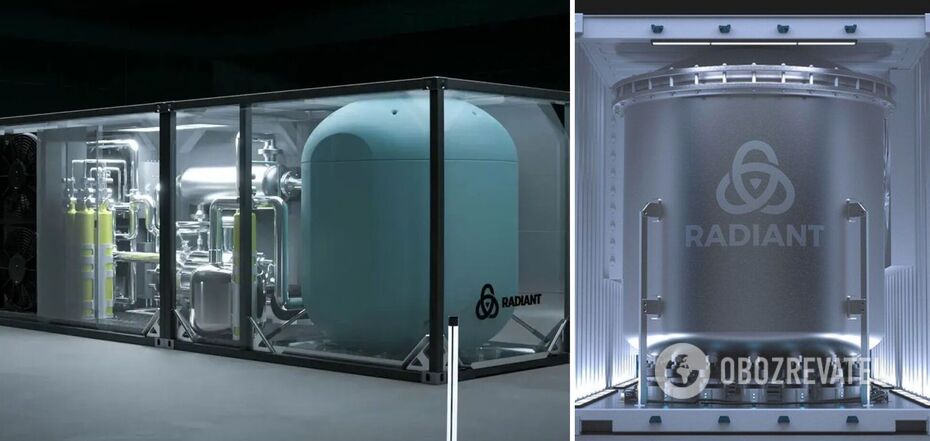Life
Elon Musk's former subordinate has developed a "home" nuclear reactor: how it will work
Radiant Industries of Doug Bernauer, a descendant of Ilon Musk's empire, has developed a prototype of a portable nuclear generator that will be able to power about 1,000 homes. The generator is based on new technology capable of withstanding ultra-high temperatures.
Bernauer has worked with Musk at SpaceX since 2007 as an avionics engineer and also helped develop Hyperloop, Boring Company, and even worked on fuel that could fuel Starship on Mars. In 2019, he left Musk to start his own company to build "heat-resistant" portable nuclear generators that could be packaged in a shipping container.
The company will build portable nuclear reactors that can be deployed even in the most remote corners of the planet.
Such reactors will run on the latest nuclear fuel and can generate one megawatt of energy, enough to power about 1,000 private homes.
The reactor, called Kaleidos, is based on TRISO particles, which are the fuel for the reactor. They consist of uranium, oxygen, and carbon, are coated with ceramic and carbon materials, and are no larger than a poppy seed. The particles can be assembled together in a sphere or a large cylinder, depending on the reactor design.
A feature of this fuel is its high melting point, which makes the reactor itself resistant to melting. In tests, TRISO particles withstood temperatures of more than 1,600 degrees Celsius and sustained no damage. As Interesting Engineering notes, this is above the temperature most nuclear reactors will ever reach.
Another mechanism designed to prevent meltdowns in the event of a sudden reactor shutdown is helium, which is used in the reactor design as a coolant to facilitate passive heat removal.
Because TRISO particles require refueling only once every five years, the reactor could be deployed in remote locations not connected to the power grid and dependent on fossil fuels for energy needs. Such reactors could be installed along highways to charge electric cars.
According to Forbes, the scientific community considers Bernauer's idea quite safe. Todd Allen, a professor of nuclear engineering at the University of Michigan, said the risks of such reactors are similar to those on dozens of university campuses in the United States that are used for nuclear research.
"There's much less radioactive material, the systems are much less complex, and it's harder for them to fail. There is a long list of reasons why these facilities are much safer than traditional large light-water reactors. And their safety record is quite good," the scientist explained.
The company now intends to get regulatory approval for the reactor design and technology and try it in operation for the first time in 2024. Commercial production is scheduled for 2028.
Earlier OBOZREVATEL told about the fact that Ukraine wants to build 20 nuclear reactors.
Subscribe to the channels of OBOZREVATEL in Telegram and Viber to keep up with the latest developments.




























